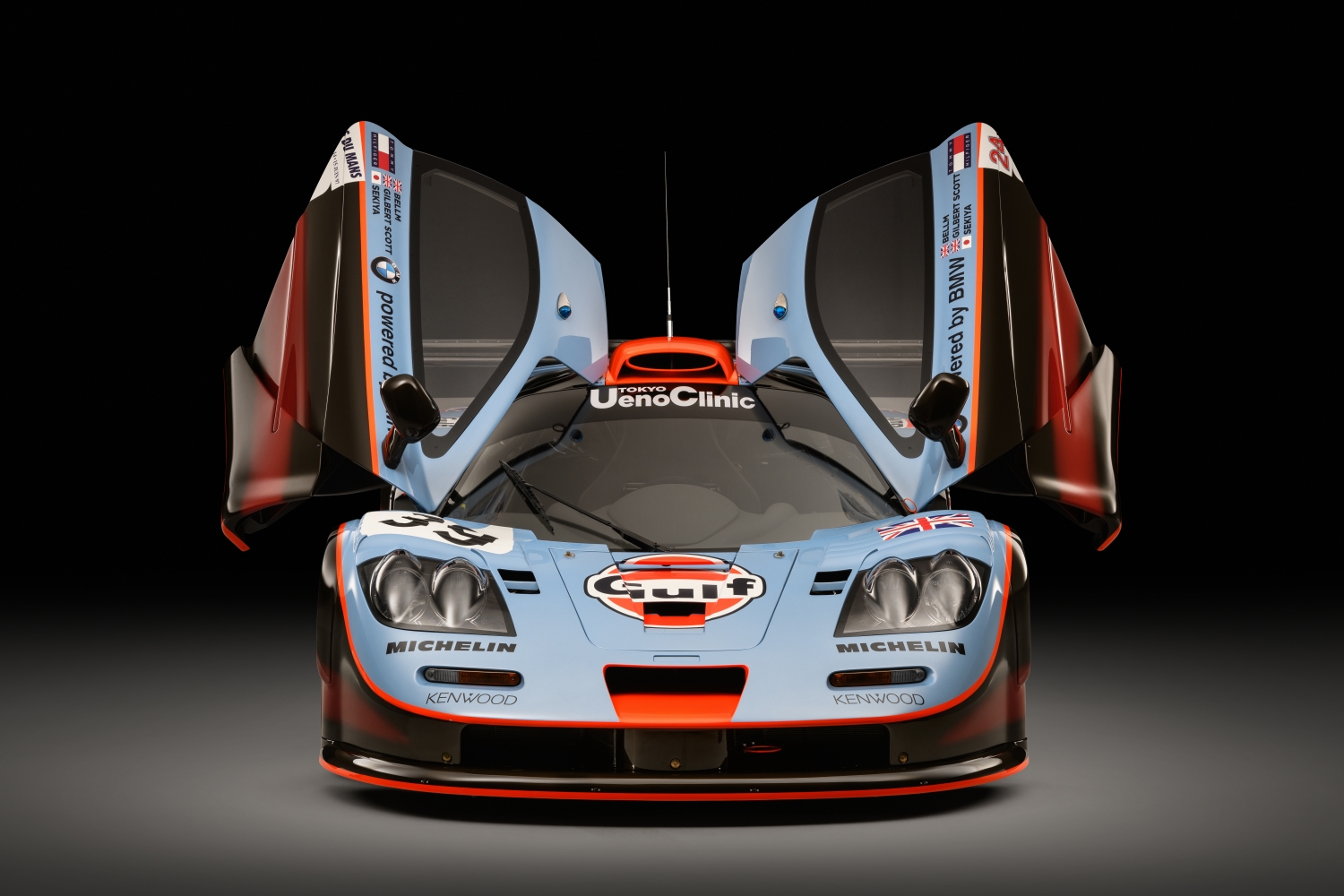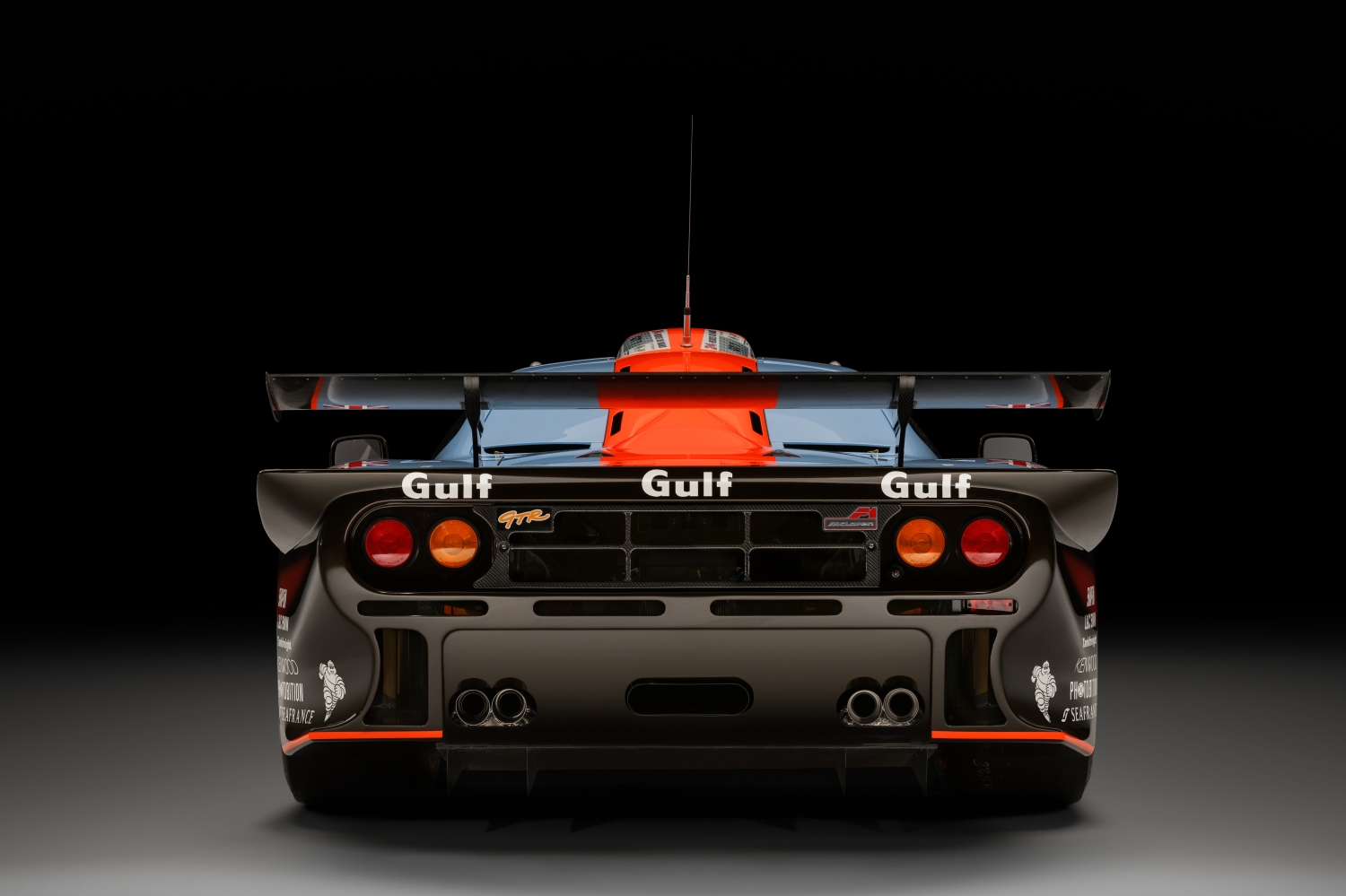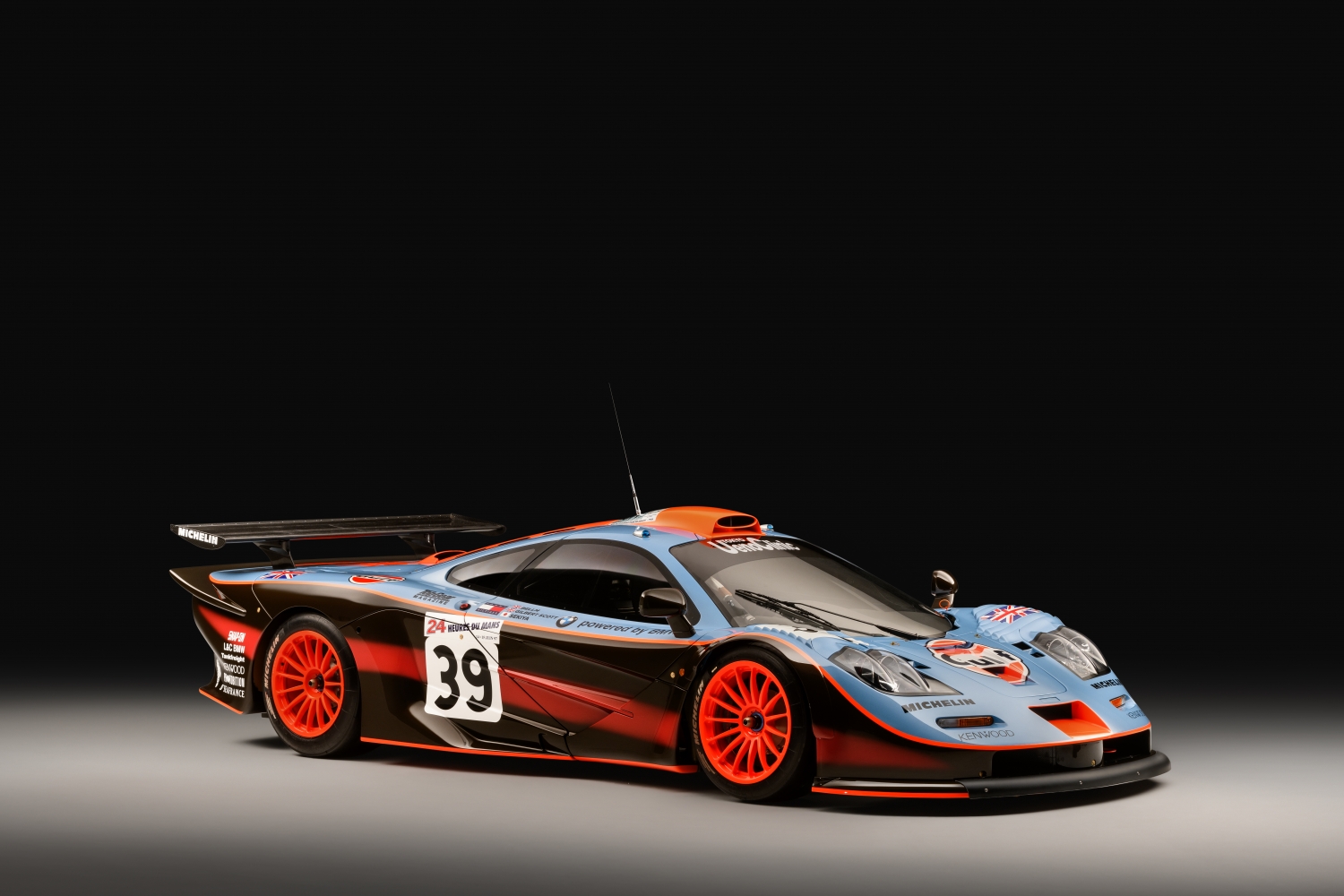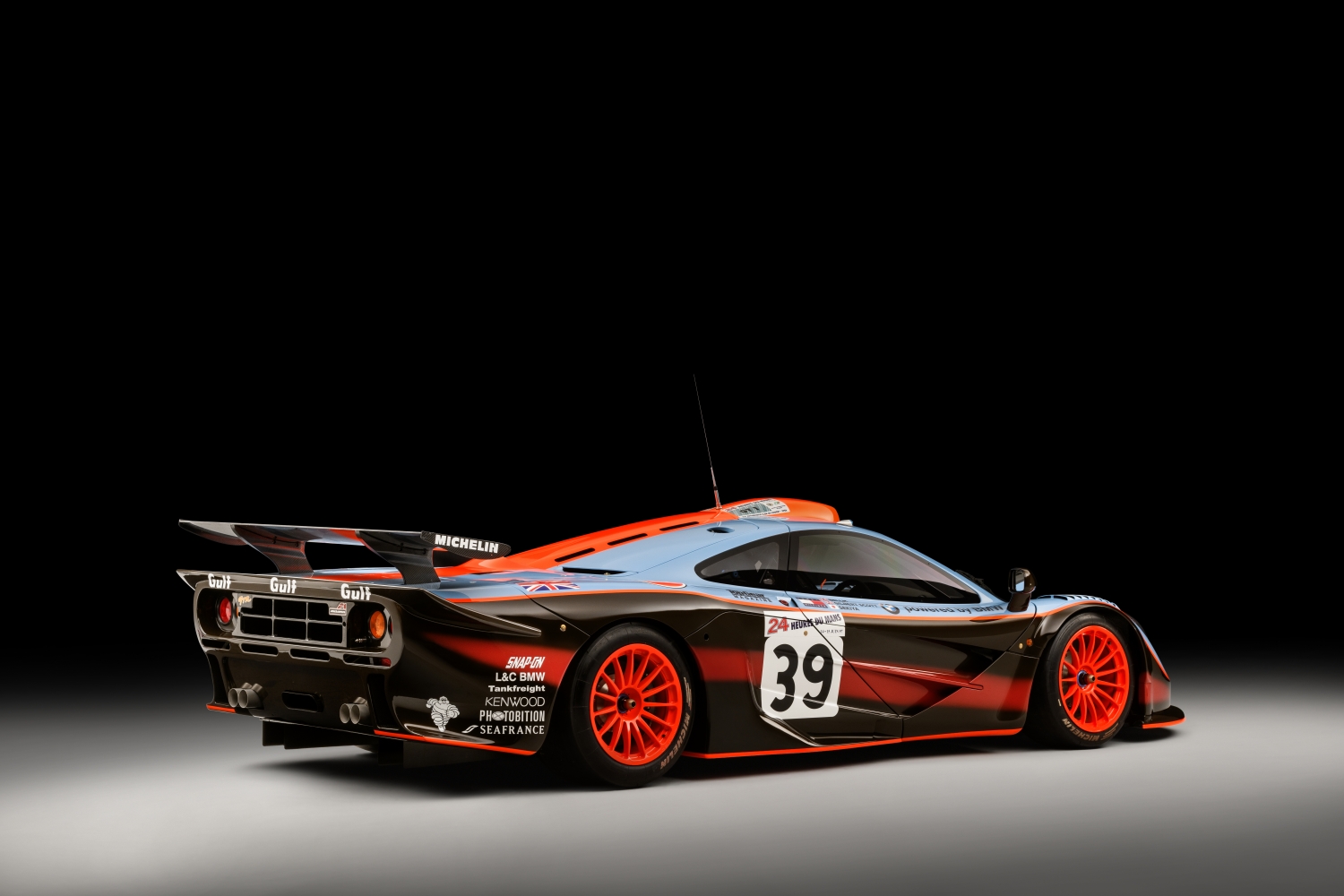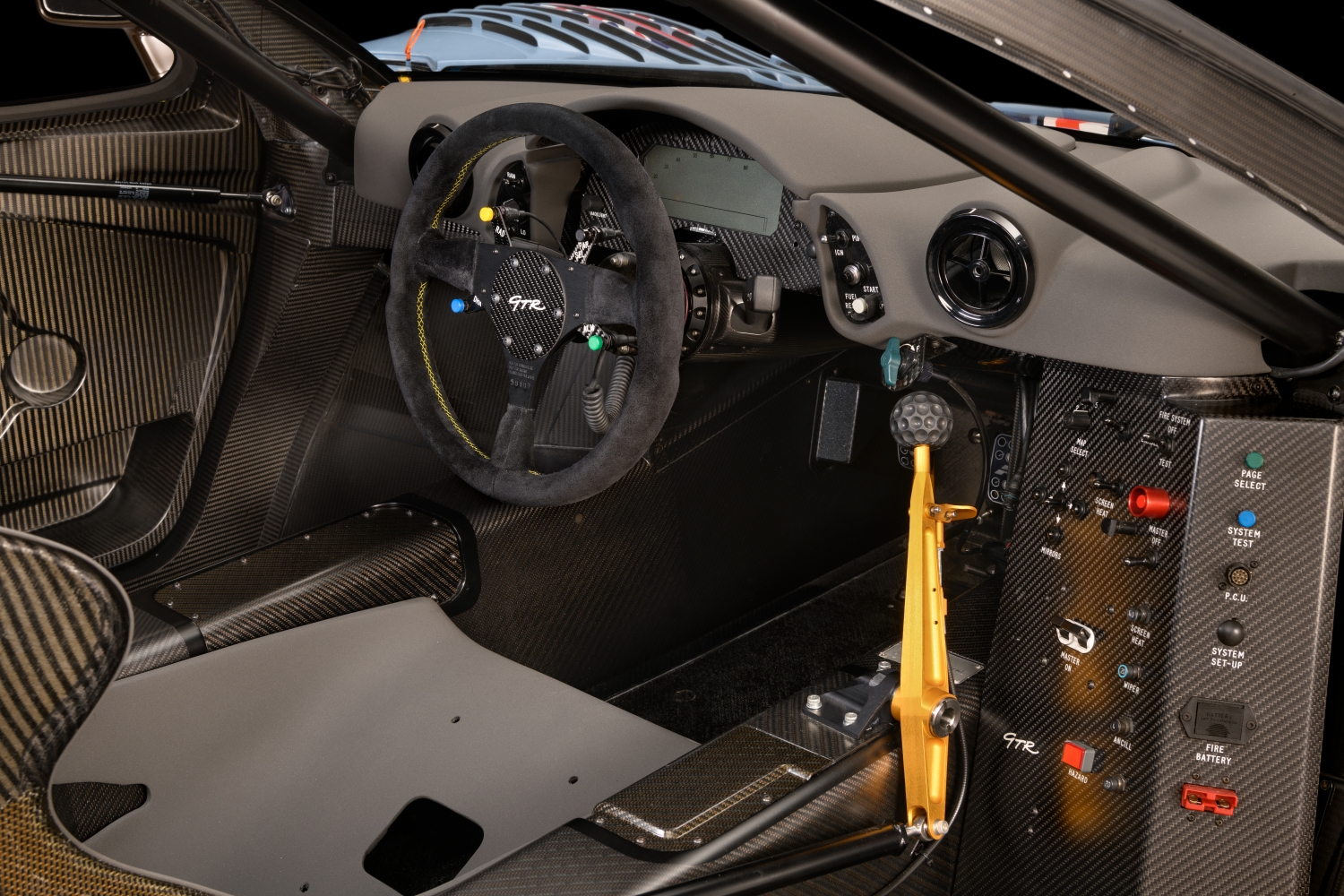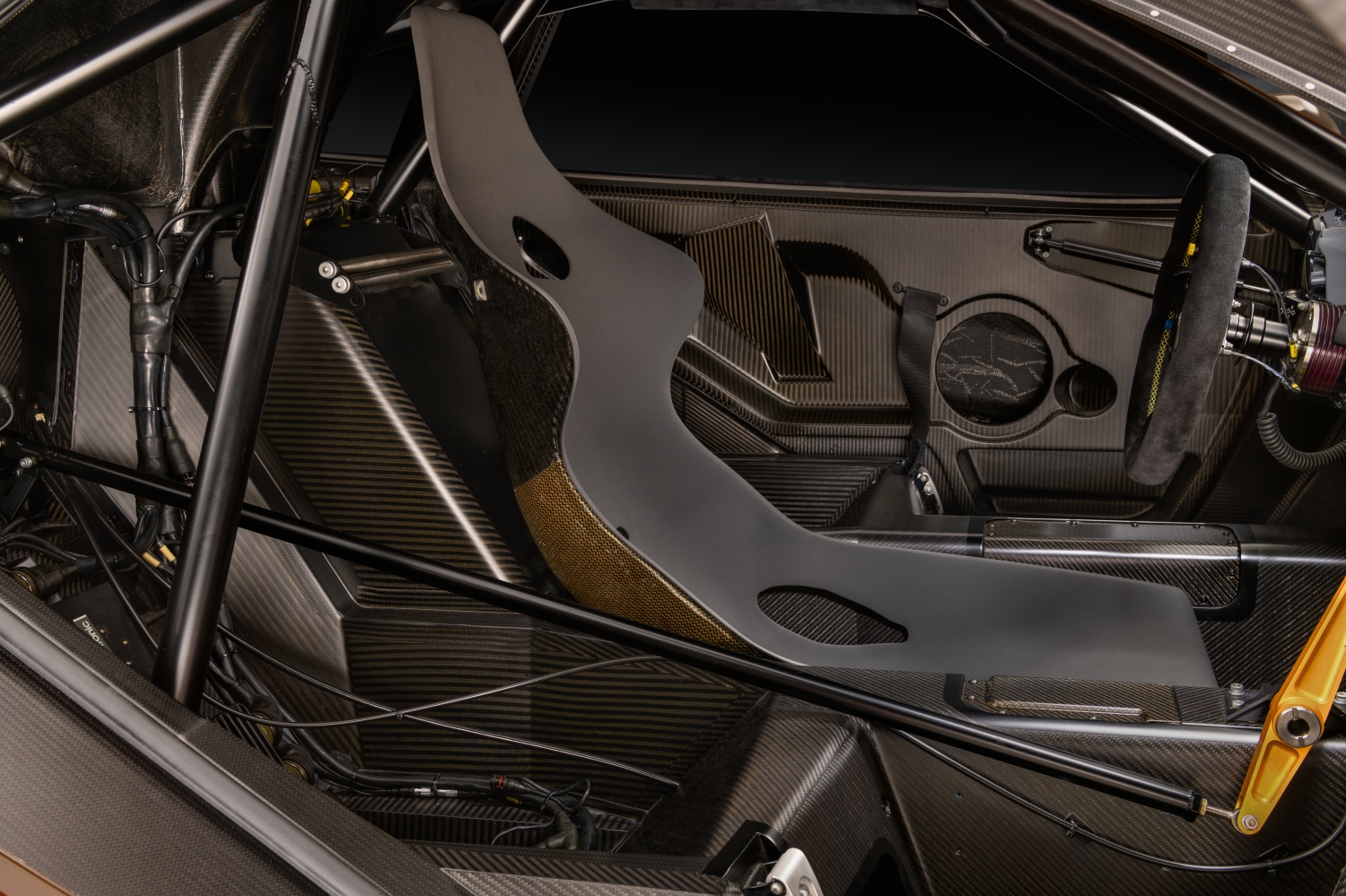For McLaren, there’s probably no better way to market its new certified restoration service than to debut a pristine F1 GTR race car as the first graduate of the program.
Related:
This particular example, chassis number 25R, led a noteworthy racing career that included a stint in the 1997 24 Hours of Le Mans, piloted by Ray Bellm, Andrew Gilbert-Scott, and Masanori Sekiya. After retiring from competition in 2005 (it was the last F1 GTR to compete in a contemporary racing series), the car was sold to a Japanese collector, where it sat until its current owner purchased the car in 2016 and brought it back to the United Kingdom. Originally, the owner asked McLaren Special Operations to refurbish the car, but the automaker decided to do a complete restoration as part of the new certification program.
After 18 months of work, this GTR Longtail looks brand new with its Gulf-Davidoff livery, orange wheels, and now-classic aerodynamic elements. While the standard McLaren F1 is already rare, with just 106 examples produced, the GTR is even more so — only 28 models were outfitted for motorsport. As such, the process of restoring this GTR was tedious. McLaren says it had to source stock parts from containers that hadn’t been opened in 20 years.
Along with a certificate of authenticity, the GTR owner (and all future customers of McLaren’s restoration program) will receive a bespoke illustrated book documenting the history of his car. McLaren isn’t the only high-end performance automaker to offer a classic vehicle restoration program. Jaguar, Aston Martin, Mercedes-Benz, Porsche, and Ferrari all offer similarly obsessive services. One differentiator is that, for now, McLaren’s program will only focus on F1 models. As McLaren ages, however (the current entity is only eight years old), there will undoubtedly be more candidates for restoration.
We can’t guarantee that GTR chassis 25R will return to the racetrack (though we might suggest entry to the Rolex Motorsport Reunion in Monterey would be a fitting re-introduction), but it will debut at this year’s Hampton Court Concours of Elegance. Until then, the restored F1 GTR will sit among the owner’s collection, which is curated by classic car consultancy Kidston SA, founded by McLaren owner Simon Kidston.
Editors' Recommendations
- The McLaren F1: Long live the king of speed
- All-New 804HP Elva Supercar Is Impressive, Even by McLaren Standards
